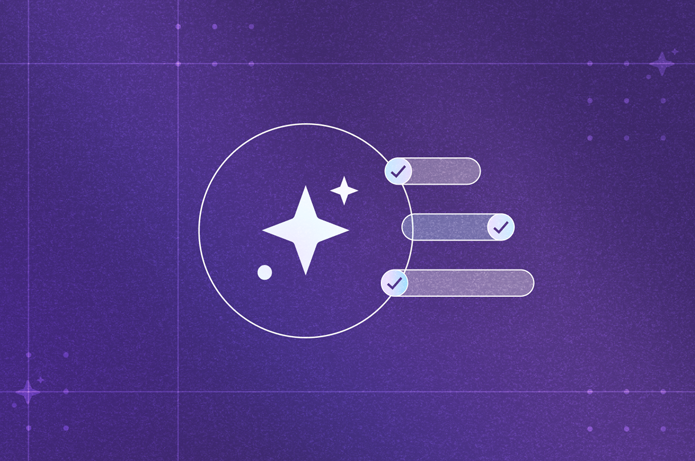The world feels unstable right now. Several large tech companies just conducted large-scale layoffs, there continues to be racial violence and mass shootings seemingly every week, and mental health has been hit hard by the state of the world.
Employees are, of course, part of the wider world and feel the weight of this instability, along with all the personal struggles they’re navigating—individually and with their families.
Collectively, it’s a heavy burden on mental health, which is still present when each employee walks into the workplace. This is why mental health support is not just a direct line item on the budget, or a box to check.
The risk of doing nothing
In the short term, it may seem easier to put employee mental health on the backburner, or do the bare minimum to “solve” this growing problem.
But mental health doesn’t just go away, and it may be costing your organization more than you realize.
The World Health Organization reports that globally, employers lose 12 billion working days each year to depression and anxiety alone, costing them 1 trillion dollars in productivity. That doesn’t include any other mental health conditions or the ways that untreated mental health issues are linked with other health conditions.
Additional costs fall into these three areas.
Higher turnover and lost productivity
More than one in four employees have quit a job due to mental health, and nearly two in every five employees say work has the worst impact on their mental health.
Quiet quitting has been extensively talked about, and this level of disengagement can be especially costly if someone is worried about losing their job or if there have been layoffs.
Presenteeism is the third issue in this area. Employees may be concerned about family members, children, or elderly parents who they’re responsible for. Maybe there’s a mental health issue or health issue within the family.
That stress makes focusing and fully functioning at work difficult if there’s no support for the individual.
Chronic illnesses and delayed care
Chronic illnesses, both mental and physical, can be very costly for employers.
So is delayed care, which can lead to more severe mental health crises. It’s easy to deal with surgeries or other health issues first, but ignoring mental health issues doesn’t make them go away. It builds up and can lead to a tipping point and possible crisis situation.
Repeated exposure to violence
Bearing witness to repetitive traumatic events, directly or indirectly through news coverage, can have a significant impact on our mental health.
The long term strain of society-wide violence, mass shootings, and racial violence builds up when employees aren’t able to process, name, and confront their feelings.
Looking through a long-term lens
While doing nothing about employee mental health may save pennies in the short term, putting an innovative mental health solution in place now saves dollars on longer term scales.
Supporting employee mental health makes a difference
So, we’ve established how harmful it is to ignore employee mental health. What’s the alternative?
Two newly released studies prove that evidence-based mental health solutions not only show clinical improvements in symptoms for employees, but also positive benefits to businesses in terms of productivity, absenteeism, and healthcare costs.
The results show that 70% of participants reliably improved their mental health, and reported reduced symptoms of anxiety and depression. When employee mental health improves, so does work performance and retention rates, including:
- 60% reduction in employee turnover
- 25% fewer missed work days
- 24% increase in productivity
3 biggest barriers to change
One of the most effective ways to address employee mental health is to level up your benefits with expanded access to care. But after making the decision to search for the right solution for your organization, you may run into many barriers that need to be overcome. Here are three of the most common.
Concerns about cost
Employers may think they can’t afford mental health solutions that go beyond traditional EAPs, but mental health is too costly to ignore. Innovative EAPs deliver savings in the amount spent on employee health plans, fewer missed days of work, and improvements in just 5.9 weeks.
According to the JAMA Network Open study, companies also save an average of $7,000 per employee within 6 months, and have a 30% reduction in total claims cost per employee. Supporting employee wellbeing is not a zero-sum game, where one side loses when the other wins.
Stigma around mental health is still widespread
Unfortunately, there’s still a lot of work that needs to be done to reduce stigma.
Talking about mental health at work is taboo in many industries and within many companies. There’s a continuing need for education, and for leaders to be trained on how to help employees with mental health needs.
If employees know they can’t talk about their mental health in the workplace or feel like mental health issues don’t have a place at work, they’ll be less likely to seek help or prioritize their mental wellbeing.
Lack of basic mental health education
As conversations about mental health have expanded in the media and other public arenas, it’s easy to forget that basic mental health education is still widely needed.
As a first step, it’s essential to acknowledge that taking care of our mental health is equally important to caring for our physical health. Just as we see a doctor when we’re sick, we need to see a therapist when we’re feeling down, anxious, or depressed.
Many people still associate mental health with being broken or abnormal, and are unaware that mental health is something we all have and should attend to with the same urgency as our physical health.
Additionally, when someone is completely new to mental health treatment, it’s natural to have questions. These could be about the difference between a psychiatrist, psychologist, therapist, or coach, about an antidepressant their doctor prescribes, or whether being on an antidepressant means they need therapy.
The impact of quality mental healthcare for employees
A quality mental health solution needs to make a difference in employees' lives. When you’re evaluating mental health solutions, start by asking this question: how would this impact employees’ lives?
Here are some things to look for:
- Access: how do employees get help, quickly?
- How do you ensure that it’s quality support?
- How do you know if the care is working for the employee? Are they getting better? Are outcomes being measured and tracked?
- The ability to match the employee with the right provider at the right time, eliminating trial and error care. Someone struggling with depression shouldn’t have to try 5 different providers before finding someone who can help them.
How Spring Health is different
Spring Health addresses barriers to mental health with our comprehensive mental health support, including precision mental health. Here’s how we’re different.
The assessment
Our clinically validated assessment screens for over 10 mental health conditions, not just depression and anxiety. Reassessment is done every two weeks, to track whether treatment is working.
Access
In an average of 10-12 minutes after learning about Spring Health, an employee can make an appointment to meet with a provider within two days.
A diverse provider network
During the booking process, enrolled employees see a list of providers along with their speciality, pronouns, and gender.
With a diverse provider network, there’s a greater chance of establishing a therapeutic alliance. There’s also more opportunity to connect with a provider who has a similar identity or lived experience, and a higher likelihood of staying in therapy and feeling understood.
Care navigation
Our Care Navigators are masters-level licensed clinicians who act as co-pilots throughout the enrolled employee’s entire mental health journey.
Shifting the culture takes time
Prioritizing employee mental health in the workplace hasn’t happened overnight, even with the accelerating force of the pandemic. Changes are happening on a society wide level, at companies, within industries, and at a global level as well.
There are conversations around employee mental health that are now considered completely commonplace, which were inconceivable just a few years ago.
In the last few years, organizations have made changes to policies and offerings so they meet the needs of their employees more effectively. They’ve also started prioritizing flexibility in when and where they work, created internal listening sessions, implemented mental health solutions, and are thoughtfully considering how to support employee wellbeing.
Let’s keep that momentum going. Learn how General Mills is transforming the mental health culture at work by reducing stigma, lowering barriers to care, and driving clinical outcomes.

Mandie currently serves as Senior Director of Employer and EAP Strategy at Spring Health. She has clinical experience in EAP and substance use treatment, and has previously worked as a Behavioral Health Consultant at Willis Towers Watson and Mercer. Mandie spent the last 20+ years working with Fortune 500 companies to promote emotional wellbeing in the workplace. She holds a Bachelor’s Degree in Psychology from St. Bonaventure University and a Master’s Degree in Social Work from the University of Illinois. In addition to being certified as a Licensed Clinical Social Worker, Mandie is also a Registered Yoga Teacher (RYT 200) and is working on her RYT 500.

.png)
.png)
.png)




.png)




.png)


.png)



